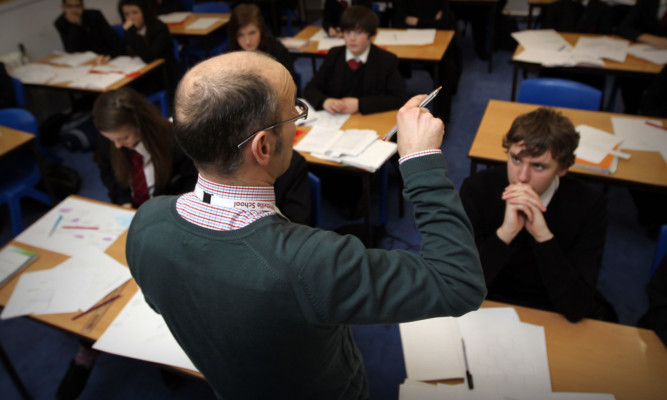A “perfect storm” of contributing factors has left Dundee’s teaching staff levels at “crisis point”, with many schools unable to fill vacancies or supply cover for absent teachers, it has been claimed.
Long-term sickness, pregnancies, a glut of retirements, hundreds of extra primary one children coming into schools and cuts in the salary levels of short-term supply teachers have all contributed to the current crisis, according to a prominent city councillor.
The local branch of teaching union EIS also confirmed the shortages.
It said it is a major problem in the city, with available working teachers having to endure the “extra stresses” of covering for vacancies or missing colleagues.
One primary school in the north of the city is missing seven permanent teachers, a source has claimed.
Labour’s education spokesperson in Dundee, Councillor Laurie Bidwell, said the goodwill of those teachers having to fill the gaps is “wearing thin”.
While Dundee City Council acknowledged there is an ongoing recruitment drive, they refused to say how many teachers they are currently short of.
Dundee EIS branch secretary David Baxter said: “We are aware that across Dundee there are shortages of teachers and there is a drive to recruit more supply teachers. In primary schools there is a deficit and that is causing extra stresses to teaching staff.
“Trying to find supply teachers to fill vacancies has been a problem. There is a lack of bodies out there in Dundee.”
Mr Bidwell said: “Through meetings with the parent council at Forthill Primary School, which is in my ward, I am aware that the shortage of supply teachers is at a real crisis point and that situation is only going to get worse over the winter months when it is more likely there will be illnesses such as flu.
“The reported shortage of supply teachers in Dundee is putting additional pressure on head teachers and their staff in our schools to cover classes when colleagues are absent.
“The current supply shortage is a result of a very unfortunate combination of factors which have served both to increase the demand for ‘supply teachers’ and at the same time restrict the supply.”
Describing the situation as a “perfect storm” he explained: “Firstly the age profile of teachers until recently was skewed towards those approaching retirement.
“Their replacement with recently qualified younger staff has meant that there has been a concurrent increase in the number of staff on maternity leave. This year I understand that there are more than 45 teachers in Dundee on maternity leave, all of whom need replacement.
“Secondly, there has been a rise in the numbers of five-year-old children in our city entering primary school each year; about 300 extra children per year equating to 18 additional classes all needing a teacher.
“Thirdly, one of the SNP’s most damaging cuts in education was to reduce the national rate of pay for short term supply teaching…..so understandably some supply teachers withdrew from the supply list or became selective; avoiding taking short-term supply work at the lower rate of pay.
“In secondary schools the internal cover may be by a teacher who is not qualified in the subject taught. While this cover is satisfactory, if not ideal, for an occasional lesson, this it is not a satisfactory longer term solution.
“The Scottish Government has finally agreed to establish a national task force to look into and come up with some solutions that increase the pool of supply teachers.
“Meanwhile, we are exploiting the goodwill of our school teachers and understandably this is wearing thin. Parents, I am sure, will be anxious that the education of their child does not suffer as a result of these shortages.”
